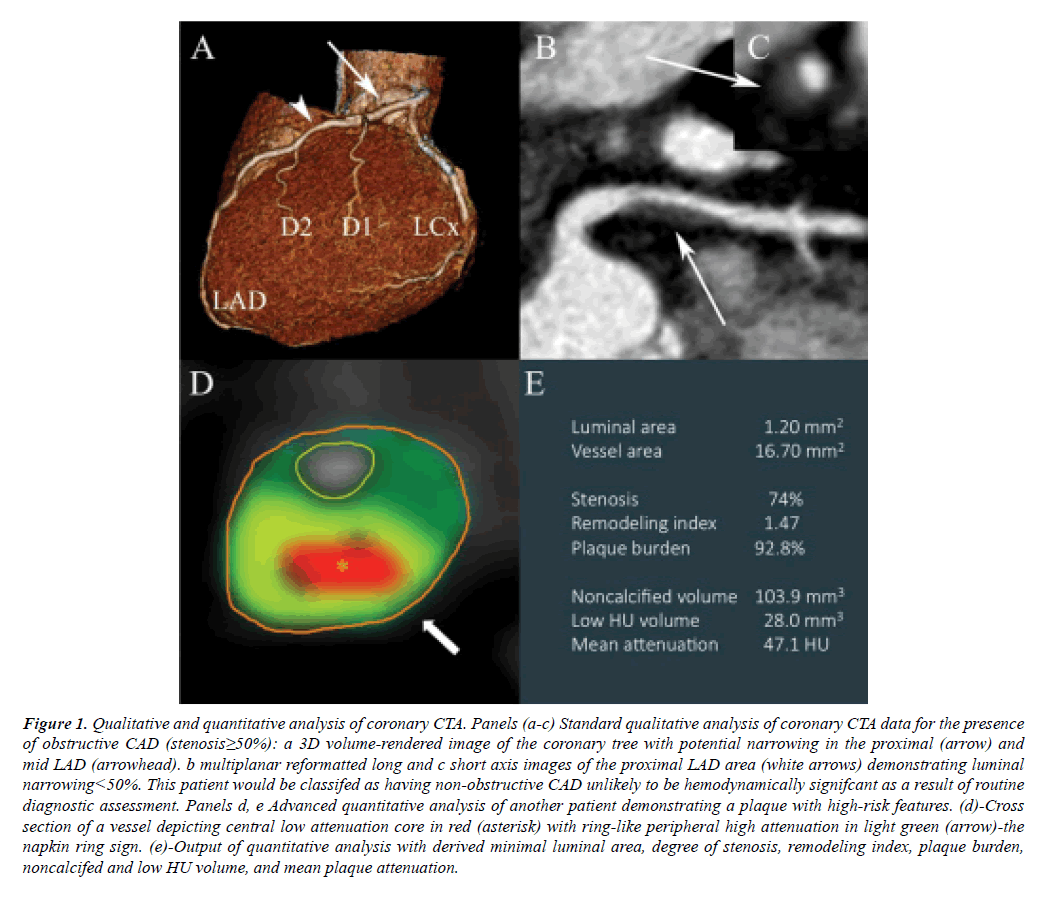Image Article - Annals of Cardiovascular and Thoracic Surgery (2021) Volume 4, Issue 1
An audit of sequential coronary registered tomography angiography (CTA) to evaluate plaque movement and restorative effect of anti-atherosclerotic drugs
Isabella Gomez*
Allied Academies, 40 Bloomsbury Way, Lower Ground Floor, London, United Kingdom
Accepted: February 18, 2021
Abstract
Qualitative and quantitative analysis of coronary CTA. Panels (a-c) Standard qualitative analysis of coronary CTA data for the presence of obstructive CAD (stenosis≥50%): a 3D volume-rendered image of the coronary tree with potential narrowing in the proximal (arrow) and mid LAD (arrowhead).
Figure 1: Qualitative and quantitative analysis of coronary CTA. Panels (a-c) Standard qualitative analysis of coronary CTA data for the presence of obstructive CAD (stenosis≥50%): a 3D volume-rendered image of the coronary tree with potential narrowing in the proximal (arrow) and mid LAD (arrowhead). b multiplanar reformatted long and c short axis images of the proximal LAD area (white arrows) demonstrating luminal narrowing<50%. This patient would be classifed as having non-obstructive CAD unlikely to be hemodynamically signifcant as a result of routine diagnostic assessment. Panels d, e Advanced quantitative analysis of another patient demonstrating a plaque with high-risk features. (d)-Cross section of a vessel depicting central low attenuation core in red (asterisk) with ring-like peripheral high attenuation in light green (arrow)-the napkin ring sign. (e)-Output of quantitative analysis with derived minimal luminal area, degree of stenosis, remodeling index, plaque burden, noncalcifed and low HU volume, and mean plaque attenuation.
